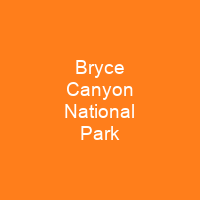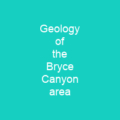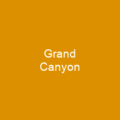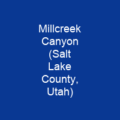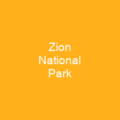Bryce Canyon National Park: A Geological Marvel in Southwest Utah
Imagine a place where nature’s artistry meets the sky, creating an otherworldly landscape that seems almost like a dream. Welcome to Bryce Canyon National Park, a breathtaking destination nestled in southwestern Utah. This park is not just a collection of rocks and soil; it’s a living testament to the power of time and erosion.
Geological Wonders
Bryce Canyon’s unique landscape is formed by natural amphitheaters called hoodoos, which are like nature’s skyscrapers. These towering rock formations have been sculpted over millions of years through the combined forces of wind and water. Each hoodoo tells a story of its own, standing as silent sentinels in this vast wilderness.
A Brief History
But how did Bryce Canyon come to be? The answer lies in the past, stretching back thousands of years. Native American habitation dates back at least 10,000 years, with Paiute culture developing a mythology surrounding these hoodoos. It wasn’t until the late 18th and early 19th centuries that European Americans began to explore this area, with Mormon scouts visiting in the 1850s.
One of these settlers was Ebenezer Bryce, who homesteaded in the Paria Valley in 1874. He named the area “Bryce’s Canyon,” but it wasn’t until June 8, 1923, that the park officially became a national monument. The road and lodge were built soon after, making this natural wonder more accessible to visitors.
Climate and Ecosystem
The climate of Bryce Canyon is as diverse as its landscape. With an average annual extreme minimum air temperature of -10.0 °F (-23.3 °C) and a range in temperatures from -30 to 97 °F (-34 to 36 °C), the park experiences both extremes. It receives more precipitation than nearby Zion National Park, with an average of 15-18 inches per year.
Despite its harsh conditions, Bryce Canyon supports a rich variety of plant and animal life. More than 400 native plant species thrive here, providing habitats for numerous wildlife species such as foxes, badgers, elk, skunks, black bears, bobcats, and woodpeckers. The park is also home to several endangered species like the Utah prairie dog, California condor, and southwestern willow flycatcher.
Protection and Development
The journey from a simple settlement to a national park was not without its challenges. Early conservationists raised concerns about overgrazing, logging, and unregulated visitation. Their efforts led to the establishment of Bryce Canyon National Monument in 1923, followed by its upgrade to a national park in 1928.
Over the years, additional land acquisitions were made, and infrastructure like Rim Road was completed by the Civilian Conservation Corps in 1934. Today, visitors can explore scenic drives, trails, and ski trails while enjoying activities such as hiking, skiing, stargazing, and camping.
Modern Challenges
In recent years, Bryce Canyon has faced new challenges like traffic congestion and the impact of climate change. In 2000, the National Park Service implemented a shuttle system to address these issues, and in 2004, they began road reconstruction projects.
Despite these modern hurdles, Bryce Canyon remains a beloved destination for nature lovers and adventurers alike. It’s a place where you can step back in time and witness the incredible power of geological forces at work. The next time you visit, take a moment to appreciate the beauty around you and imagine the stories each hoodoo could tell.
So, why not plan your next adventure to Bryce Canyon? Discover its hidden gems, explore its trails, and immerse yourself in this natural wonderland. After all, isn’t it worth exploring the world’s most extraordinary landscapes?

You want to know more about Bryce Canyon National Park?
This page is based on the article Bryce Canyon National Park published in Wikipedia (retrieved on December 3, 2024) and was automatically summarized using artificial intelligence.
